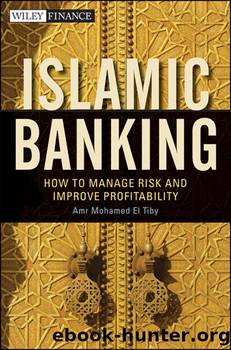Islamic Banking by Amr Mohamed El Tiby Ahmed

Author:Amr Mohamed El Tiby Ahmed [Ahmed, Amr Mohamed El Tiby]
Language: eng
Format: epub
ISBN: 9780470930113
Published: 2010-11-11T16:00:00+00:00
Working toward these objectives, the committee has reached several concordats and agreements. The first agreement was the 1975 Basel concordat, which defined the roles and responsibilities of the authorities in the parent and host countries regarding the supervision of foreign branches or subsidiaries of banks. The supervision of liquidity would be the primary responsibility of the host country. Solvency of bank branches would be the responsibility of the parent country, and solvency of foreign subsidiaries was the responsibility of the host country. The concordat was revised in 1983 as a result of the supervisory gaps that were revealed after the scandal and the collapse of the Banco Ambrosiano in 1982. The bank was established in Milan, Italy, in 1896, mainly to serve religious purposes. From 1960 onward, the bank extended largely through a network of overseas banks and companies and started illegal transactions of transferring money out of Italy. In 1982, the bank collapsed and was taken over by the Bank of Italy. The revised concordat assigned the responsibility for solvency problems arising from subsidiaries and liquidity problems arising from either a subsidiary or branch jointly to host and parent countries. The solvency problem arising from a branch was the responsibility of the central bank of the parent country because a branch has no legal independence and is considered to be an integral part of the parent company.
Two major issues were not addressed in both concordats: (1) lender of the last resort and (2) the extension of deposit insurance to all deposit liabilities (Heffernan 1996). In December 1987, after years of work to secure international convergence of supervisory regulations governing the capital adequacy of international banks, the committee published the proposals for the new regulations, followed by a consultative process in all G-10 countries. The proposals were also circulated to supervisory authorities worldwide. In 1988, the committee introduced the Basel Accord that established a single set of capital adequacy standards. In 1995, an amendment to the accord was in place and introduced market risk. A revised framework for Basel II was formulated and announced in 2004 (Basel Committee on Banking Supervision 2004).
The committee does not possess any formal supranational supervisory authority, and its conclusions do not, and were never intended to, have legal force. Rather, it formulates broad supervisory standards and guidelines and recommends statements of best practice in the expectation that individual authorities will take steps to implement them through detailed arrangements that are best to their own national systems. The committee reports to the Central Bank Governors of the G-10 countries and seeks the governorsâ endorsement for its major initiatives. In addition, however, since the committee contains representatives from institutions that are not central banks, the decisions it takes carry the commitment of many national authorities outside the central banking fraternity. The committee's secretarial unit is provided by the Bank for International Settlements in Basel. The 12-person secretarial unit is mainly staffed by professional supervisors on a temporary basis from member institutions. In addition to undertaking the secretarial
Download
This site does not store any files on its server. We only index and link to content provided by other sites. Please contact the content providers to delete copyright contents if any and email us, we'll remove relevant links or contents immediately.
International Integration of the Brazilian Economy by Elias C. Grivoyannis(57294)
The Radium Girls by Kate Moore(10903)
Turbulence by E. J. Noyes(7033)
Nudge - Improving Decisions about Health, Wealth, and Happiness by Thaler Sunstein(6629)
The Black Swan by Nassim Nicholas Taleb(6184)
Pioneering Portfolio Management by David F. Swensen(5600)
Rich Dad Poor Dad by Robert T. Kiyosaki(5140)
Zero to One by Peter Thiel(4818)
Man-made Catastrophes and Risk Information Concealment by Dmitry Chernov & Didier Sornette(4731)
Secrecy World by Jake Bernstein(3774)
Millionaire: The Philanderer, Gambler, and Duelist Who Invented Modern Finance by Janet Gleeson(3566)
Skin in the Game by Nassim Nicholas Taleb(3456)
The Age of Surveillance Capitalism by Shoshana Zuboff(3413)
The Money Culture by Michael Lewis(3277)
Skin in the Game: Hidden Asymmetries in Daily Life by Nassim Nicholas Taleb(3259)
Bullshit Jobs by David Graeber(3173)
The Dhandho Investor by Mohnish Pabrai(3162)
The Wisdom of Finance by Mihir Desai(3070)
Blockchain Basics by Daniel Drescher(2884)
